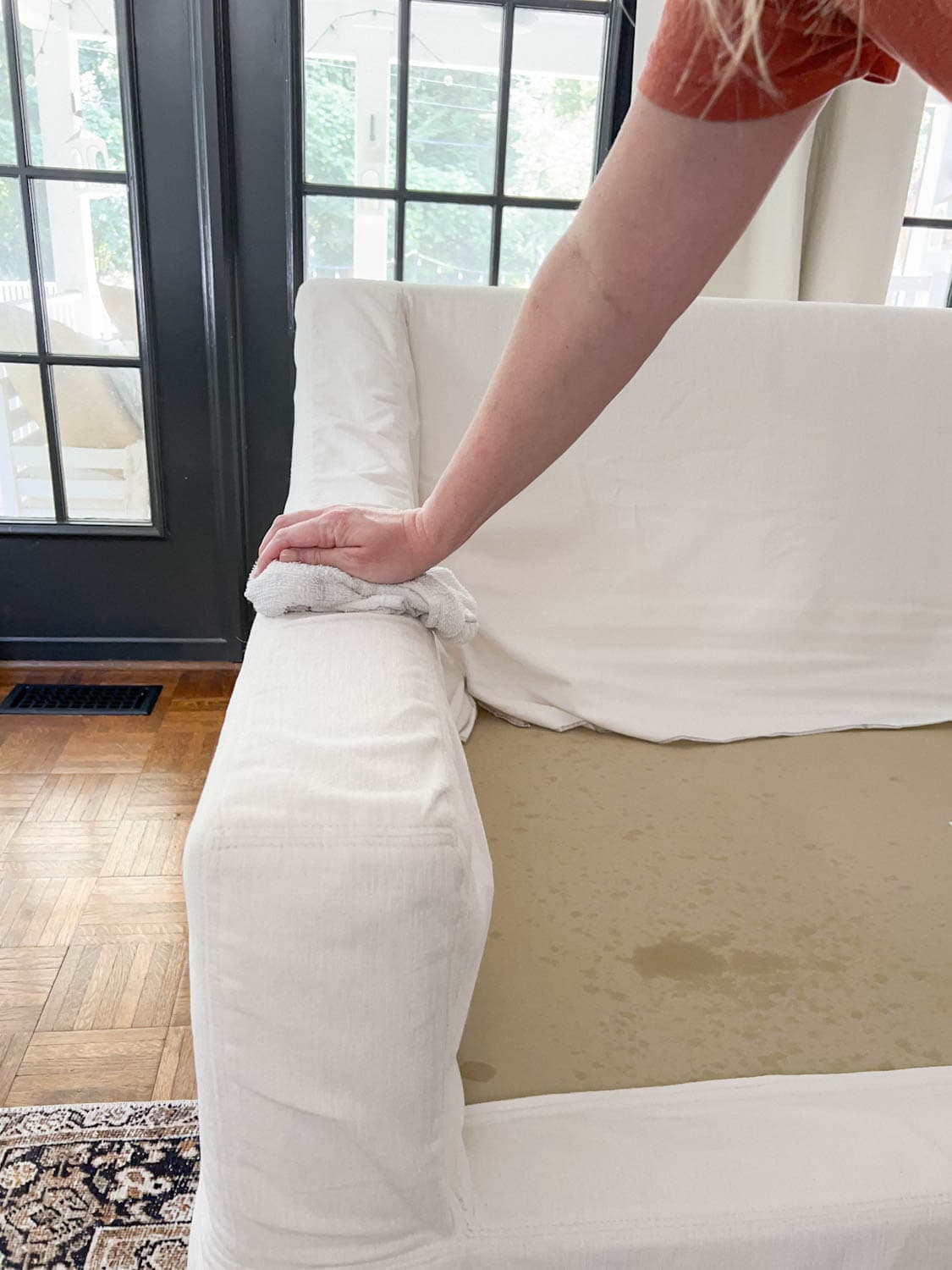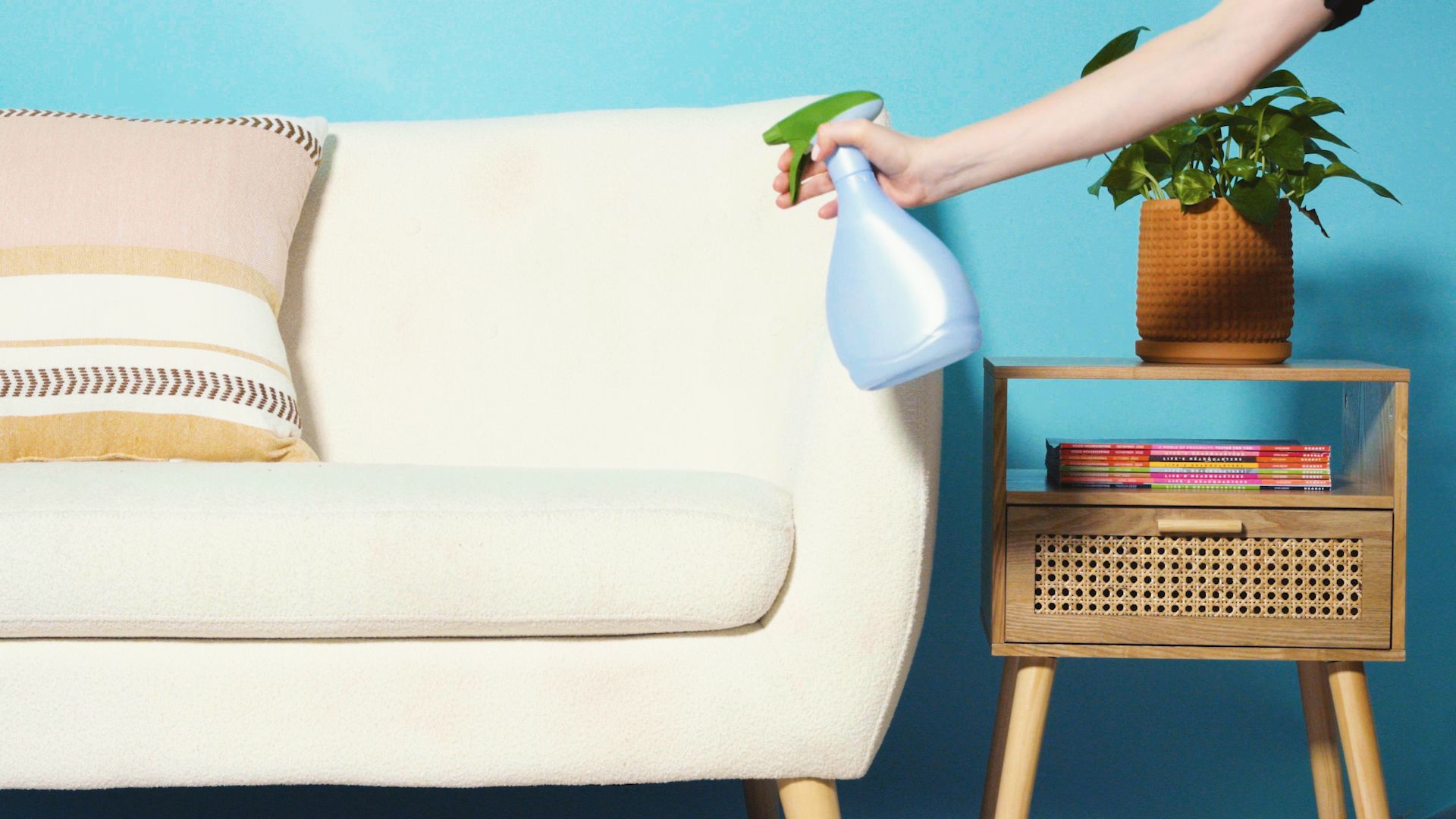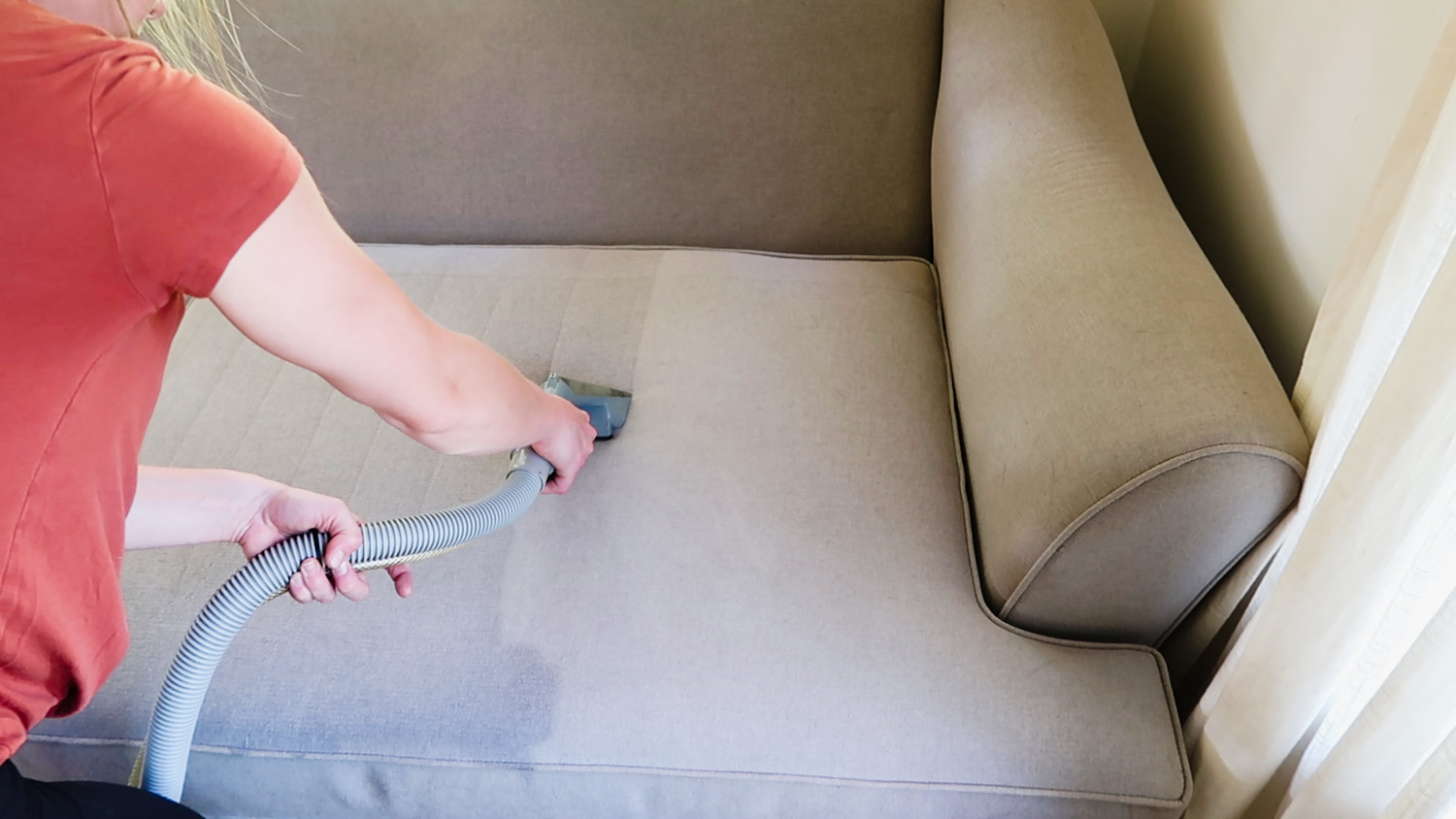Introduction: The Quest for a Pristine Upholstery
In the heart of every home lies a central piece that not only provides comfort but also anchors the living space’s aesthetic appeal – the sofa. With its fabric embrace welcoming family and friends alike, it’s no wonder that over time, these cherished pieces can accumulate a myriad of stains and spots. From accidental spills during movie nights to the subtle marks left by our beloved pets, maintaining a stain-free sofa may seem like an uphill battle. Fear not, for with the right knowledge and techniques, restoring your fabric sofa to its former glory is not just achievable but can also be a therapeutic endeavor. In this comprehensive guide, we delve into the art of effectively cleaning a fabric, ensuring it remains a beacon of cleanliness and comfort in your abode.

Understanding Fabric Types: The Foundation of Effective Cleaning
Before embarking on any cleaning mission, it’s crucial to identify the type of fabric your sofa is made of. This preliminary step is paramount, as different fabrics require tailored cleaning approaches to avoid damage. Common sofa materials include cotton, linen, microfiber, wool, and synthetic blends, each with unique characteristics and cleaning sensitivities. Labels often provide cleaning codes (W, S, WS, or X) that dictate the appropriate cleaning method: water-based cleaners, solvent-based cleaners, both, or vacuuming only, respectively. Misjudging the fabric could lead to shrinkage, color fading, or even irreversible damage, making this initial assessment indispensable.
Pre-Cleaning Preparation: Setting the Stage for Success
To ensure efficient and safe cleaning, start by removing all cushions and vacuuming thoroughly. Use a crevice tool to reach into tight spaces, extracting accumulated dust, crumbs, and pet hair. This preliminary step not only enhances the effectiveness of subsequent cleaning efforts but also prevents the formation of grime during the cleaning process. Additionally, protect the surrounding floor by laying down a plastic sheet or old towels to catch any drips or overspray.

Tackling Stains: A Step-by-Step Approach
When faced with a stain, act promptly but with care. Blot, never rub, the affected area with a clean, damp cloth to lift as much of the spill as possible. For specific stains, employ targeted treatments:
- Food and Beverage Stains: Mix a solution of mild detergent (preferably one designed for delicate fabrics) and warm water. Apply gently using a soft-bristled brush or sponge, working from the outer edge towards the center to prevent spreading. Rinse with a damp cloth and blot dry.
- Grease and Oil: Sprinkle cornstarch or baking soda onto the spot to absorb excess oil before vacuuming it off. Then, use a solvent-based cleaner suitable for your fabric type, following the product instructions carefully.
- Ink or Dye: Apply rubbing alcohol on a cotton swab and gently dab the stain. Test on an inconspicuous area first to check for colorfastness.
Remember, patience is key when treating stains. Repeat the process as necessary, allowing the fabric to dry completely between attempts to assess the progress.
Deep Cleaning Techniques: Revitalizing Your Sofa’s Fabric
For a thorough cleanse beyond spot cleaning, consider steam cleaning or renting a professional-grade upholstery cleaner. These methods penetrate deep into the fibers, lifting embedded dirt and odors. Always follow the machine’s instructions and test a small, hidden section first. Alternatively, a gentler approach involves creating a cleaning solution of equal parts white vinegar and warm water, applied with a soft brush or sponge and then rinsed with a damp cloth. Vinegar’s acidity helps neutralize odors and sanitize without harsh chemicals.

Post-Cleaning Care: Preserving Your Efforts
After cleaning, allow your sofa to air-dry completely, preferably away from direct sunlight to prevent fading. Speed up the process by placing fans around the room or using a dehumidifier. Once dry, you may want to lightly brush the fabric with a soft clothes brush to restore its texture and fluffiness. To maintain your sofa’s freshness between deep cleans, regular vacuuming and prompt attention to spills are essential. Consider using fabric protectors that create an invisible barrier against future stains, but always ensure compatibility with your sofa’s material.

Enhancing Your Sofa’s Life with Preventive Measures
In addition to periodic deep cleaning and post-cleaning care, adopting preventive measures can significantly extend your sofa’s lifespan and aesthetic appeal. Here are some practical tips to incorporate into your sofa maintenance routine:
- Rotation of Cushions: Regularly rotating and flipping your cushions can help distribute wear evenly, preventing uneven fading and compression. This simple habit ensures all areas of the cushion experience similar usage, prolonging their overall comfort and appearance.
- Sunlight Management: While natural light brightens up a room, prolonged exposure can fade and weaken fabric fibers. Position your sofa away from direct sunlight if possible, or use window treatments like curtains or blinds to filter the light. UV-protective films on windows are another effective solution.
- Use of Throws and Covers: Strategically placed throws and sofa covers not only add an extra layer of coziness but also protect the fabric from daily wear, pet hair, and accidental spills. Opt for washable covers that can be easily removed and cleaned.
- Pet Protocols: If you have pets, establishing ground rules (like no jumping on the furniture) and providing them with their own designated lounging spots can minimize damage. Additionally, regular grooming reduces shedding and the transfer of pet oils onto the sofa.
- Snack Smart: Eating on the sofa can increase the risk of stains and attract pests. Implementing a “no food” policy or using trays to contain snacks can make a significant difference in maintaining cleanliness.
- Regular Inspections: Periodically inspect your sofa for any signs of wear, such as fraying edges or loose threads. Promptly addressing these issues with minor repairs can prevent them from escalating into larger problems.

Conclusion: A Stain-Free Haven
Achieving a stain-free sofa is not merely about aesthetics; it’s about nurturing a clean and inviting environment where memories are made and relaxation reigns supreme. By understanding your sofa’s fabric, preparing meticulously, and employing the right cleaning techniques, you empower yourself with the ability to transform even the most soiled sofa back to its pristine state. Remember, prevention is equally important – investing in coasters, discouraging eating on the sofa, and routine maintenance can significantly reduce the need for extensive cleaning in the future. With these strategies in place, your fabric sofa will remain a cherished cornerstone of your home, radiating comfort and style for years to come.









